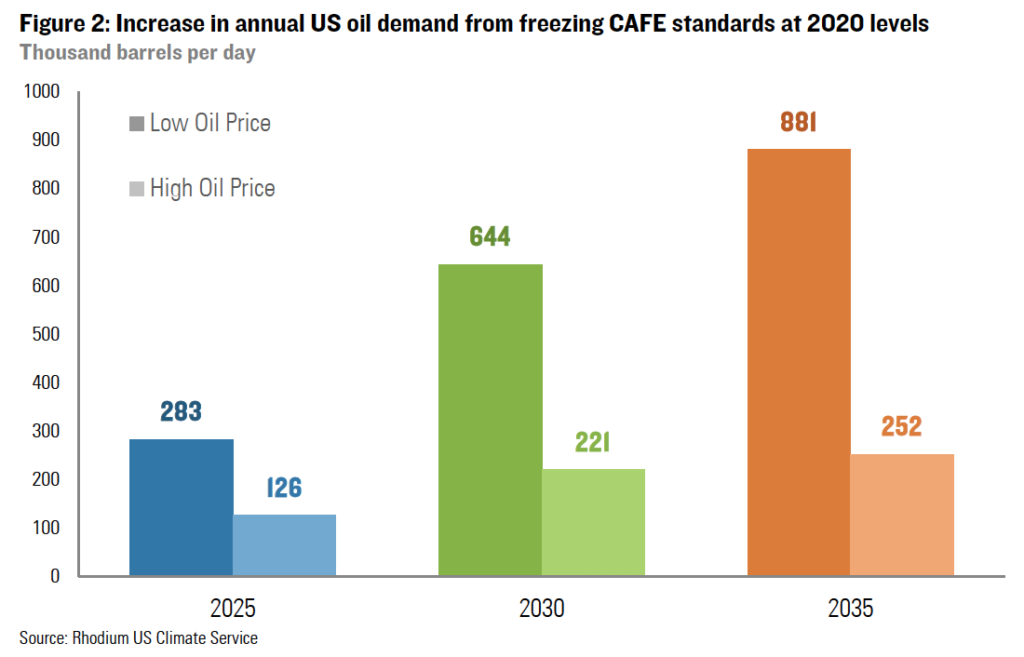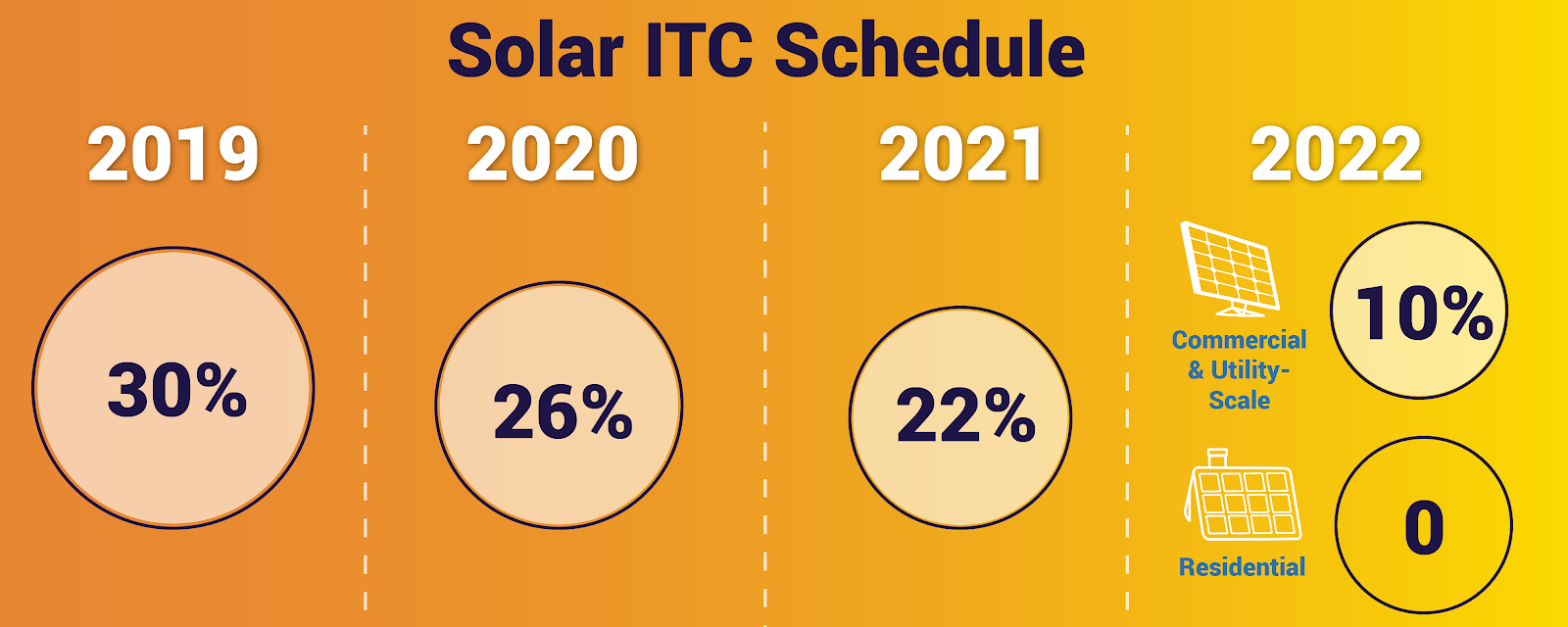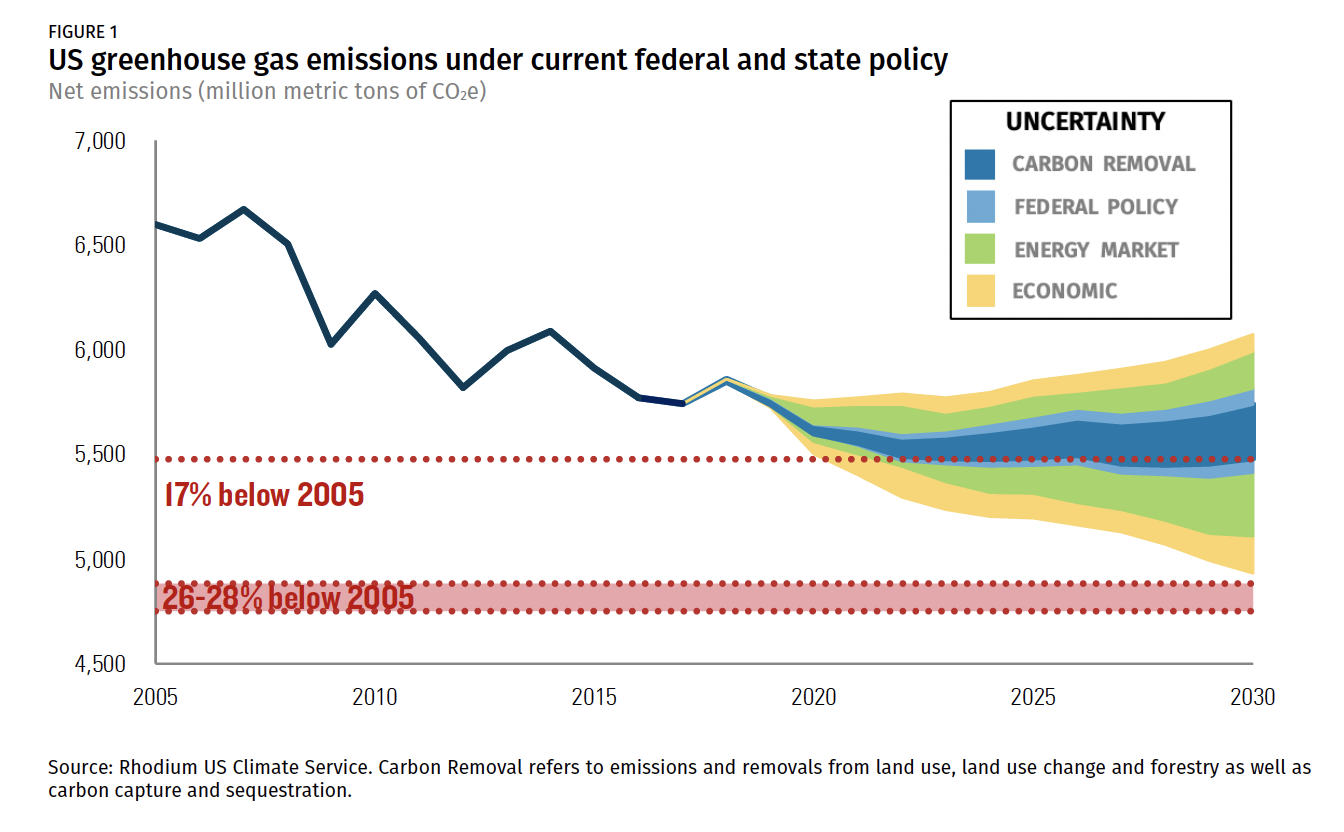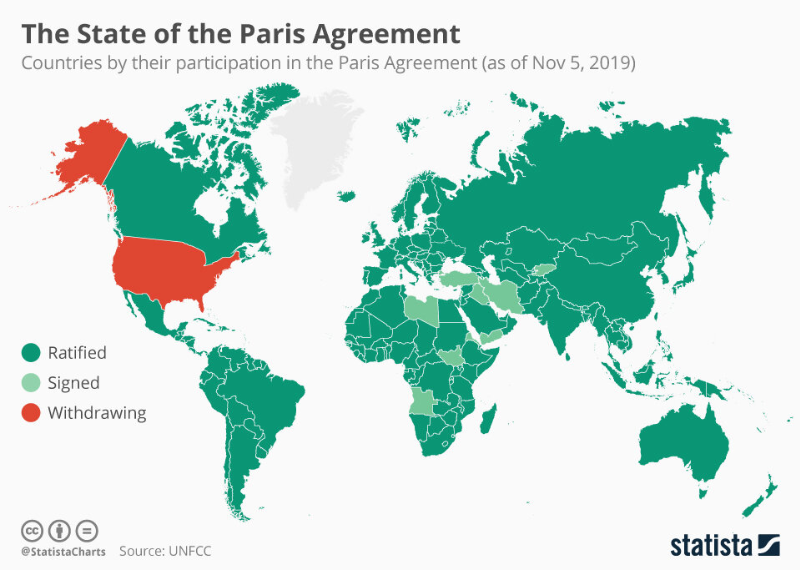What do four more years of Trump mean for the climate and energy agenda?
By
Andrew Pickens
| 29 Aug 2020
By Andrew Pickens | 29 Aug 2020
Since taking office, the Trump administration has set-off on an extensive effort to deregulate and weaken climate and environmental protection, while promoting fossil fuels. This includes vehicle fuel efficiency standards, the Clean Power Plan, methane leaks, and an overlying effort to undermine scientific rule making. U.S. greenhouse gas (GHG) emissions are up since 2017 and the bedrock of environmental standards weakened across the federal government.
With less than 100 days to go before the general election, we ask what a second term of the Trump administration spells for the climate and energy agenda. Our assumptions are the following: the 2020 election is won by the incumbent, split congressional chambers with Democrats holding the House, and Republicans winning a swath of gubernatorial and state legislator positions.
Sections:
- Oil and Gas
- Fuel Efficiency Standards
- Research & Development
- Solar and Wind Power Financing
- Laws and Regulations
- Supreme Court Cases
- Republican Obstructionism
- Eroding Cooperative Federalism
- International Climate Policy
Oil and Gas, Take the Wheel
Trump’s America First Energy plan goes full (coal-powered) steam ahead.
The Trump administration’s “energy revolution” that seeks to prop-up coal and oil continues to ignore growing displacement brought on by mechanization and energy market trends. Deregulation of environmental protections does not prove to be the saving grace for coal miners that the President promised. Loosened polluting laws do little to bring back jobs.
National wildlife refuges, the Arctic, and offshore waters across the entire contiguous U.S. will continue to be cleared for oil and gas drilling. At a time when scientists have called for leaving fossil fuels in the ground to avoid the most dangerous consequences of climate change and to steer clear of its uncertainty around rates of heating, a second term will certainly seek to process more permits and remove legal obstacles for free-reign oil and gas drilling.
It’s four more years of green lighting new oil pipelines and subsequent fights in the court. And there is always the possibility the administration takes it a step further: establishing measures/Executive Orders to help prevent bans on fracking.
Sustaining the oil industry may become a central issue of his second term. It would certainly be the case if derailments to the industry, like COVID-19 and a glut in the market, continue into 2021. This could take the form of oil bailouts by simply paying oil producers to leave crude in the ground, which has been discussed by the administration this year.
In direct opposition to environmentalists and the Democrats’ “keep-it-in-the-ground” strategy, the Trump administration and Senate allies will certainly seek out oil and gas bailouts. If not now, then after the election. After all, the industry represents a large share of business investments, provides significant political contributions to Republicans over Democrats, and the risk of a bubble in the fracking industry caused by cheap debt may be too much of an economic liability to not protect.
Transport: Much Ado About Something
The Trump administration has been steadfast in decreasing fuel efficiency standards for vehicles (the Corporate Average Fuel Economy (CAFE)), a key tool in combating climate change. Four more years would provide enough time to break through the strong public and legal resistance that continue to impede the rollback. The administration’s current draft of the rule increases annual fuel economy (fewer miles to the gallon), and subsequent plans and efforts would likely continue to legislate the country into the past.

If the CAFE standards are frozen at 2020 levels, meaning no improvements in how many miles to the gallon vehicles must abide by, and with low oil prices possibly continuing through to 2025, then we can expect an increase in annual oil demand of nearly 300,000 barrels per day. With no new efficiency standards in place for an additional four years, U.S. energy-related carbon dioxide is expected to be 16 to 37 million metric tons (MMt) higher than today.
Nearly half of U.S. energy-related CO2 emissions are from burning petroleum fuels, of which the transportation sector is the main culprit as it is almost entirely dependent on the fuel. A rollback of the nation-wide standards, without the possibility of remediation until at least 2025, would hand the oil industry a momentous win.
And if oil prices stay low, then we can expect Americans to continue buying S.U.V.s and other gas-guzzling vehicles, as they have been doing up until now. The rollback would blunt efficiency gains that have proven to successfully slow the pace of U.S. transportation emissions.
What’s more, the federal government gets four more years to hack away at states’ sovereignty by limiting their ability to set their own standards. For example, the administration has revoked California’s authority to establish strict fuel efficiency standards and blocked it from the revision process. In a reversal of what was once respect of states’ rights and their autonomy, the Republican federal government is now attacking those that do not align with its fossil-fuel intensive pathway.
R&D, Do Not Go Gentle Into That Good Night
Government-funded laboratories, grant programs, and even private research and development initiatives are at even greater risk of a two-term Trump presidency. His administration’s contempt for climate science is again exemplified by partisan efforts to disrupt research and development into renewable energy, nuclear, and carbon capture and storage technology.
Low-interest loans of over $40 billion intended to go to clean energy projects, namely carbon sequestration projects (removing CO2 from the atmosphere) and new vehicle technology (improved efficiency), were withheld during the first coronavirus relief package. In the same swing, tax restrictions and rebates on the oil and gas industry were loosened.
The Department of Energy’s (DOE) 17 national labs were born out of the Manhattan Project. They conduct cutting edge research into renewable energy and energy efficiency technologies, fuel economy improvements and provide partnerships with universities to help students and scientists research and scale next-generation clean energy technology. In the same department, the Office of Energy Efficiency and Renewable Energy is credited with driving the rapid expansion of rooftop solar panels, EV batteries, and LEDs. It has recently been subject to deep budget cuts.
The National Renewable Energy Laboratory (NREL), as one of the national labs, is a leading component of the country’s breakthrough in solar, wind, and electric vehicle technology. It seeks to improve energy efficiency and reduce the cost of renewable energy.
Standing in contrast to Trump’s fossil fuel agenda, the lab that has found ways to modernize the national power grid to save consumers money and reduce CO2 emissions will continue to be muzzled and defunded.
Trump’s proposed 2020 budget almost universally means less money for science agencies. Source: AAAS R&D Budget and Policy Program estimates.

Every year since taking office, the Trump administration has proposed rolling back government spending on science, particularly focusing on sweeping budget cuts to the EPA, Department of Energy and its subsidiaries. However, Congressional pushback has limited how far the dismantling of science programs can go.
The DOE’s innovation incubator created under the Obama administration, ARPA-E (or Advanced Research Projects Agency-Energy), is another target of defunding and slow eradication. Although it has received bipartisan support over the years thanks to it attracting private funding and its ability to quickly scale energy projects, including for military overseas, the administration has continuously sought to eliminate its budget. If Congress does not serve as a backstop, ARPA-E and other government R&D initiatives will be slashed.
Four more years will spell new cunning ways to shortchange clean energy innovation through budget appropriations and derelict government agencies. It will forfeit American competitiveness in the global clean energy race, which cedes job growth and energy security and reliability to the likes of China.
When the Sun Don’t Shine and the Wind Stops Blowing
It is not only through budget appropriations that the administration can go after clean energy and environmental science.

The federal solar tax credit of 30% has been an important driver for the growth of solar PV deployment in the U.S. since 2006. Both the Business Energy Investment Tax Credit and the Investment Tax Credit (private and residential projects respectively) are set to “sunset” (or reduced), with a step down from the original 30% credit on the total installed cost of the system to 10% and 0% in 2022 for commercial/utility-scale and residential respectively.
The Production Tax Credit (PTC) is another federal incentive that has helped wind developers access capital needed to develop new wind energy projects with a 2020 deadline.
These tax incentives have significantly boosted the share of renewables in the U.S. energy mix. Four more years of Trump means neither an extension for the PTC nor a revised or eliminated sunset clause. The solar industry is pushing hard to get an ITC extension, though wind industry groups have noted a phase-down of its tax credit does not mean a collapse in its expansion.
Another way in which the administration can inflict damage on the burgeoning solar and wind industries is through tariffs. Trump’s 2017 solar tariffs that sought to inflict economic damage on Chinese PV manufacturers cost the U.S. 62,000 jobs.
An extended U.S.-China trade war could spell new tariffs in the second term. This would raise the cost of solar panels, again, and push clean energy towards becoming non-competitive.
Democratic presidential candidate and former Vice President, Joe Biden, plans to spend 20 times the current federal allocation for clean energy technology. Missing out on that level of investment, and instead, witnessing deterring policy will plague clean energy growth and the ability to quickly reduce emissions in-line with the Paris Agreement goals.
Four more years spells an unrelenting hampering of an American clean energy industry that employed nearly 4 million people last year with the potential of employing 25 million over the next 15 years.
“In nature, nothing exists alone”
Environmental rollbacks can be expected to continue and target those remaining laws and regulations that have ensured environmental accountability in a free market. The Trump administration can freely ignore the inextricability of nature and its resources. Among those rules targeted, the following are in play:
NEPA: In another effort to destabilize the bedrock of environmental protection regulation, the administration finalized a rollback of the National Environmental Policy Act (NEPA) this year that enforced environmental impact assessments of federal infrastructure projects. A NEPA review will no longer ensure climate change is accounted for in infrastructure projects. This implies that the energy industry encounters fewer lawsuits and overall pushback when establishing a project. We can expect NEPA to be completely abolished with little to no opposition from the Republican Party.
PURPA: Already on the regulatory docket, the Public Utility Regulatory Policies (PURPA) is facing a proposal to gut its support for renewable energy. Four more years of administrative control by a Trump White House allows for further legislative changes like this one that would make it difficult for utilities to reach their clean energy and climate goals and state compliance. The Federal Energy Regulatory Commission (FERC), which oversees PURPA regulation and reform has first sought to overhaul a provision on fixed-price contracts. This damages small solar contracts as it leaves uncertainty in payments to power suppliers who will now be less willing to take on short-term, riskier contracts. There is a myriad of provisions under PURPA that can be reformed, watered down, and made to benefit vertically-integrated utilities (non-renewable energy providers) over the next four years. However, we can expect legal battles ahead. With time on their side for those battles to play out, financing of renewable energy slows down in these years ahead.
FERC: Although the Federal Energy Regulatory Commission (FERC) is an independent regulatory agency within the U.S. Department of Energy, the Senate confirmation of a third republican to its board this year has been seen as the foregoing of its independence. The board has been said to be abusing its authority over interstate energy markets that privilege fossil fuels over renewables. That continues under a second term. Competitiveness of renewables will be weakened to a point of dissolution:
- Distributed Energy Resources (DERS), which entails solar, electricity storage, and EVs, will be taken off of the supply side of wholesale power markets, which makes up about three-quarters of the country’s electricity supply. As a result, they become noncompetitive in the open market.
- Exemptions of buyer-side mitigation (BSM) market rules are narrowed. Already in New York, FERC has made it more difficult for clean energy projects to clear its capacity auction — meaning projects like offshore wind and energy storage will have to clear additional hurdles to be able to bid in the state’s grid operator power purchases.
These efforts to destabilize the financial viability of clean energy will continue, hindering renewable energy projects being implemented by grid operators. It will weaken state efforts to meet decarbonization goals. And the administration may take one step further:
With pressure exerted on FERC and the states, national grids could be connected up so that environmentally progressive states like California are forced to use subsidized coal-powered electricity.
Make America Litigious Again
With another four years of attempting regulatory repeals, the likelihood of environmental and climate rollbacks reaching the Supreme Court improves.
Many of the cases brought by the administration have been delayed or suspended for not providing adequate analyses for repeal or consideration of the benefits forgone if rolled back. The rules that govern environmental regulation are underpinned by a “significance finding” (or “endangerment finding”), which is a science-based finding/evidence of the causes and impacts. It is a backstop for many of these legal rollbacks. That’s because it gives the EPA the authority to regulate greenhouse gas emissions under the Clean Air Act, and it provided the basis for the fuel efficiency improvement standards for cars and light-duty trucks.
A renewed four years gives the administration breathing room to further seek to establish its own endangerment finding for each greenhouse gas emitted. Adulterated rules become law and the impacts of air pollutants contributing to climate change and health ailments (namely carbon and methane emissions) grow uninhibited. An appeal of the endangerment finding would have to reach the Supreme Court to be revised.
The ideological leanings of Supreme Court justices could form a lopsided court. Justice Ginsburg could retire during Trump’s second term, with the court then having a 6-3 conservative majority.
Any bill put forward by Democrats in the House that can garner enough (unlikely) support in the Senate, and by chance is packaged with enough political concessions, corporate tax cuts, and is labeled as part of Trump’s “infrastructure week” rhetoric, then it would fail in front of the Court.
A case to watch out for during Trump’s potential second term is Chevron USA v. Natural Resource Defense Council, which could be reversed under a conservative Court. The Supreme Court established deference to an agency’s interpretation of legislation which it administers. As a consequence of the reversal of the decision, the EPA would no longer be able to regulate pollutants like mercury and CO2 emissions unless legislation specifically allows it. We return to a time when companies could circumvent a process of environmental review on plant or factory pollutants.
Other historic Supreme Court decisions are in the crosshairs, namely:
- Union Elec. Co. v. EPA: Regulating utilities to limit sulfur oxide emissions.
- Rapanos v. the United States: Providing federal protections on the country’s waters. The administration’s revision, Navigable Waters Protection Rule, which took effect in June, pulled back federal protections for millions of miles of streams and acres of wetlands.
Republican Obstructionism
In 2021, a regulatory path to federal environmental legislation continues to be obstructed by the lethargy of a divided government. The hope for a carbon tax dims as congressional deadlock becomes further engrained.
The Bipartisan Climate Solutions Caucus in Congress, with an equal number of Republicans and Democrats, continues to gain new members but fails to deliver solutions that can become law. Instead, Republicans join with little appetite for concrete proposals. They do so solely in response to public concern about climate change rising as a priority among crucial Republican voting blocks.
Congressional Republicans’ antipathy to environmental protection continues for four years. The rhetoric of technical solutions to climate change becomes part of the Republican platform, with no actual substance or desire for policy.
Conservative think tanks and special interest groups continue to sow ambiguity over the origins of more severe and frequent wildfires, droughts, floods, and deadly storms. Republicans are given protection as they hide behind fabricated deniability for about half a decade more.
Cooperative Federalism, Abrasive Tactics
In the absence of federal leadership on climate change, U.S. cities, states, and the private sector have made commitments to deep emissions cuts. However, under their current trajectory, they would only reduce the country’s emissions by about two-thirds of what is needed. It would not suffice for the country to meet its Paris Agreement pledge to cut its emissions by 26-28% below 2005 levels by 2025. Without federal policies, structural decarbonizing changes to our energy generation, transport, and agricultural systems are unlikely to be achieved.
It is one thing to ignore the federalist structure of the American government and another to actively tamper with it. The federal government and states working together — “cooperative federalism” — is foundational to implementing climate and energy protections. The Clean Air Act and the Clean Water Act are structured around principles of cooperative federalism since air and water pollution are cross-border issues.
The next four years will turn the cooperative into full-fledged combative federalism that renders issues needing to be dealt with by the co-sovereigns, including climate change, environmental protection, and energy management, untenable. The EPA’s “sue and settle” will undermine states’ authority that favor environmental regulation at every turn.
It is 2025 and the U.S. is unable to meet its modest goal to reduce emissions by 26-28%. The absence of federal leadership and a lack of cooperation and support to states has caused the country to miss out on the vast economic benefits of a clean energy transition. Deregulation had little to no effect on preserving fossil fuel jobs and the lack of federal support in the form of re-skilling programs lead to further displacement for workers and communities across the country.
The political tug of war between states and the federal government, in its struggle for supremacy, has been won. The Republican Party has been dispelled of libertarian values in favor of omnipresent absolutism.
Diplomacy: Furthering a Global Vacuum
The administration has already initiated the process of leaving the Paris Agreement by giving written notification of withdrawal to the United Nations Framework Convention on Climate Change (UNFCCC). The exit can only take effect on November 4 of this year, the day after the presidential election. Alternatively, they could have simply left the UNFCCC and have had the request finalized a year later. They chose not to as to have a seat at the negotiating table, pitching coal and other fossil fuel interests at yearly climate talks (i.e., Conference of the Parties — or COPs).
Now rolling into 2021 undeterred, the administration can simply shortcut the process and exit the UNFCCC, furthering a global political vacuum that allows for “bad actors” to build up polluting energy systems without any accountability. At this point, it would be another act of forfeiture to a non-binding agreement.
Not rejoining Paris would also aggravate the diplomatic consequences of the U.S. absence in international efforts to rein in emissions.
Foreign assistance to states by the U.S., funding commitments to the Green Climate Fund, and refocusing the Overseas Private Investment Corporation (OPIC) and the Export-Import Bank (Ex-Im) on clean energy projects would be forgone in the second term.
The chance to restore diplomatic pressure on high emitting countries would be lost. Countries like Russia and Turkey who have ignored plans to ratify the Paris Agreement, along with others like Australia and Brazil reversing their commitments to decarbonize, receive extended moral cover. The diplomatic collateral of a climate champion the size of the U.S. being absent from international political forums equates to an abandonment of efforts to avoid catastrophic climate impacts, for which there is a time limit of 10 years.
Vote Early and Vote Often
In the words of EPA Administrator, Andrew Wheeler: “Under the Trump Administration, the U.S. Environmental Protection Agency (EPA) is shifting our regulatory approach to incentivize businesses to invest in job-creating projects and innovative technology.”
Four more years of a Trump administration means four more years of climate and energy deregulation. There are 39 actions with a deregulatory goal in development at the EPA. Through the EPA, the Department of the Interior, of Energy, State, and by using Executive Orders and the courts, the Trump administration will cause GHG emissions to increase and will be responsible for thousands of additional deaths from poor air quality each year.
With a win in November, Trump’s legacy of obstructionism, denial, and attacks on the climate and energy agendas is cemented in American history. Let that instill in you an obligation to vote.
This article first appeared in The Global Current
Andrew Pickens tweets @pickensa
Also Read: Incriminating e-cigs no matter what is the new international sport
Disclaimer: Views expressed in the blog are the author's own



